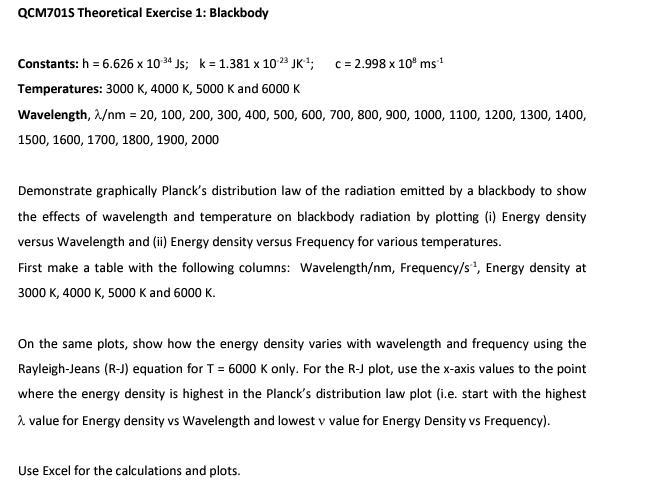Answered step by step
Verified Expert Solution
Question
1 Approved Answer
QCM7015 Theoretical Exercise 1: Blackbody Constants: h = 6.626 x 1024 s; k= 1.381 x 10 JK; C = 2.998 x 10 ms? Temperatures: 3000

Step by Step Solution
There are 3 Steps involved in it
Step: 1

Get Instant Access to Expert-Tailored Solutions
See step-by-step solutions with expert insights and AI powered tools for academic success
Step: 2

Step: 3

Ace Your Homework with AI
Get the answers you need in no time with our AI-driven, step-by-step assistance
Get Started


